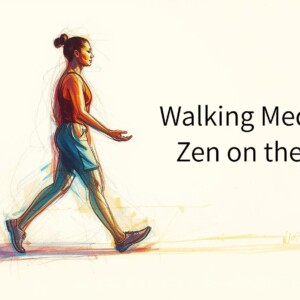
Mindful Technology Use Through a Zen Lens: Reclaiming Presence in a Digital Age
Technology connects us, informs us, and empowers us—but it can also overwhelm us. Constant notifications, endless scrolling, and digital multitasking often pull us away from the present moment. From a Zen perspective, the problem is not technology itself, but how we use it. When approached with awareness, even the most modern tools can become gateways to mindfulness.
In this article, we explore mindful technology use through a Zen lens, offering practical ways to bring clarity, focus, and intentionality into your digital life.
The Zen Approach: Use Without Attachment
Zen teaches us to engage with the world fully, but without clinging. The same principle applies to our phones, computers, and apps. The goal isn’t to reject technology—it’s to use it with awareness, so that it serves life, rather than consumes it.
“The mind is everything. What you think, you become.” — Zen Saying
When technology is used unconsciously, it shapes us in ways we don’t choose. When used mindfully, it becomes a tool for growth, learning, and connection.
1. Pause Before You Tap
Before opening a browser, app, or message, pause for a moment.
Ask yourself:
-
Why am I reaching for this?
-
What do I hope to gain?
-
Is this the best use of this moment?
Even a single breath of awareness creates space between stimulus and response, helping you act—not react.
2. Silence as a Digital Practice
Silence is central to Zen. Try building small “silence zones” into your tech habits:
-
Turn off non-essential notifications
-
Put your phone on silent mode during meals, walks, or work
-
Create device-free hours, especially in the morning and before bed
These micro-practices restore your inner stillness and reduce digital dependency.
3. Use Technology as a Mindfulness Tool
You can turn your devices into tools for awareness rather than distraction:
-
Set a Zen bell app to ring hourly, reminding you to breathe
-
Change your lock screen to a mindful quote
-
Use focus timers like Pomodoro to work with clarity and rest intentionally
It’s not about deleting your apps—it’s about redefining your relationship with them.
4. Practice Single-Tasking, Not Multitasking
Multitasking splits your attention and erodes the quality of both work and experience.
Instead, practice:
-
Checking email mindfully—read, respond, close the app
-
Watching one video or reading one article at a time
-
Avoiding simultaneous scrolling and conversation
Zen teaches: When you scroll, just scroll. When you stop, just stop.
5. Notice the Effects of Digital Use
After spending time online, pause and observe:
-
How do you feel—calm or agitated?
-
Did that interaction nourish you or drain you?
-
Are you more present or more distracted?
This simple self-check builds awareness of your digital patterns, empowering you to make wiser choices.
6. Return to the Present
The digital world thrives on future clicks, next updates, and endless streams. Zen brings you back to this breath, this action, this moment.
Try this:
-
When you close your laptop, take one full breath
-
Before posting online, pause and reflect: Is this useful, kind, necessary?
-
After scrolling, ground yourself by touching something physical—your desk, a teacup, the floor beneath your feet
Each act becomes a ritual of return.
Final Thought: Digital Minimalism with a Zen Heart
Mindful technology use through a Zen lens isn’t about restriction—it’s about liberation. It’s about choosing depth over distraction, presence over passive consumption. In a world of constant noise, mindful tech use becomes a radical act of peace.
So next time you reach for your device, pause.
Breathe.
And ask, “Am I using this, or is it using me?”
Choose to use technology not as an escape from life, but as a support for living it fully—with awareness, intention, and care.
🌿 Want to go deeper into Zen and mindful living?
Explore ZEN for LIFE — a gentle guide to bringing presence, simplicity, and calm into your everyday routine.
Now available on Kindle.
#ZENforLIFE #MindfulLiving #EverydayZen










この記事へのコメントはありません。